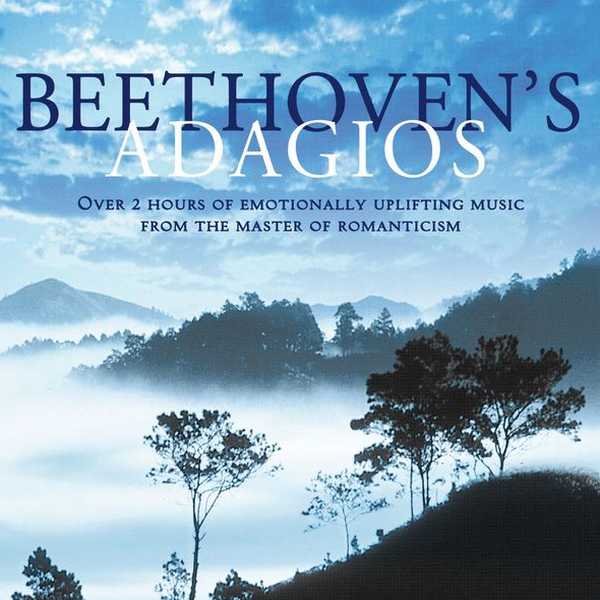
Format: FLAC (tracks)
Label: Warner
Catalogue: 3984248026
Release: 2006
Size: 545 MB
Recovery: +3%
Scan: cover
01. Piano Sonata No. 14 in C-Sharp Minor, Op. 27 No. 2 “Moonlight”: I. Adagio sostenuto
02. Symphony No. 9 in D Minor, Op. 125 “Choral”: III. Adagio molto e cantabile – Andante moderato
03. Violin Sonata No. 5 in F Major, Op. 24 “Spring”: II. Adagio molto espressivo
04. Symphony No. 6 in F Major, Op. 68 “Pastoral”: II. Scene am Bach. Andante molto moto
05. Mass in C Major, Op. 86: I. Kyrie
06. Piano Trio No. 4 in B-Flat Major, Op. 11 “Gassenhauer”: II. Adagio
07. Septet in E-Flat Major, Op. 20: II. Adagio cantabile
08. Romance for Violin and Orchestra No. 2 in F Major, Op. 50
09. Piano Concerto No. 3 in C Minor, Op. 37: II. Largo
10. Piano Concerto No. 5 in E-Flat Major, Op. 73 “Emperor”: II. Adagio un poco mosso
11. The Creatures of Prometheus, Op. 43: V. Adagio – Andante quasi Allegretto
12. Violin Concerto in D Major, Op. 61: II. Larghetto
13. Piano Sonata No. 8 in C Minor, Op. 13 “Pathétique”: II. Adagio cantabile
14. Symphony No. 7 in A Major, Op. 92: II. Allegretto
15. Piano Concerto No. 2 in B-Flat Major, Op. 19: II. Adagio
16. Triple Concerto for Violin, Cello and Piano in C Major, Op. 56: II. Largo
17. Cello Sonata No. 3 in A Major, Op. 69: III. (a) Adagio cantabile
18. Symphony No. 3 in E-Flat Major, Op. 55 “Eroica”: II. Marcia funebre. Adagio assai
Beethoven’s adagios stand as some of the most poignant and introspective moments in his music, offering deep emotional insight into the composer’s psyche. Known for his boldness and innovative spirit, Beethoven used slow movements like adagios to convey complex, often profound, emotions. Unlike many composers who might treat slower movements as mere interludes, Beethoven infused them with a sense of gravitas, creating moments of reflection, yearning, and even transcendence.
A prime example is the *Adagio sostenuto* from his *”Moonlight” Sonata* (Piano Sonata No. 14 in C-sharp minor, Op. 27, No. 2), where the melody gently unfurls over a shimmering accompaniment, evoking a dreamlike or meditative atmosphere. The slow movement from his *Symphony No. 9*, the *Adagio molto e cantabile*, similarly stands out for its ethereal beauty, offering a serene contrast to the symphony’s vigorous opening movements. In these adagios, Beethoven often creates a sense of suspension in time, allowing listeners to dwell on each note and phrase, while still maintaining a sense of structure and purpose.
Beethoven’s adagios are also technically challenging, often requiring performers to maintain control and sensitivity over long, sustained phrases. This careful attention to detail is perhaps best exemplified in the *String Quartet No. 14 in C-sharp minor, Op. 131*, where the *Adagio ma non troppo e molto espressivo* stretches the emotional range of the performers, blending sorrow and tenderness in an intensely personal way.
Overall, Beethoven’s adagios reveal the composer’s genius in capturing the human experience in music. Through these slow movements, he expressed deep emotion and complexity, creating timeless works that continue to resonate with listeners today.



